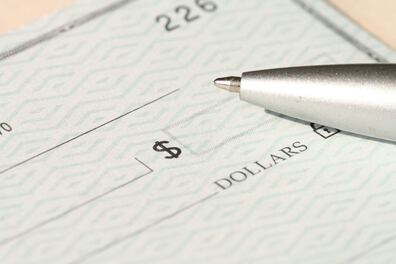Mastering Money Moves: Guiding Students through Checking Account Essentials
As educators, you have the unique opportunity to shape the financial literacy of the next generation, and understanding checking accounts is a fundamental aspect of this knowledge. Teaching middle and high school students about checking accounts equips them with practical skills they'll use throughout their lives. By introducing the essentials of checking accounts in an engaging way, you can empower your students to navigate their financial journeys with confidence.
Checking accounts are a central hub for managing day-to-day finances, making them a critical topic for students to grasp. As middle and high school teachers, you can break down the key components of checking accounts, from deposits and withdrawals to managing a checkbook and using online banking tools. By explaining how to write checks, make electronic transfers, and monitor account balances, you provide students with the foundation they need to handle their finances responsibly.
One important aspect of teaching checking account literacy is shedding light on associated fees and charges. Many students might not be aware of overdraft fees, ATM fees, or monthly maintenance charges. By discussing these fees and teaching students how to avoid them, you're giving them practical knowledge that can save them money and prevent unnecessary financial stress in the future.
Interactive activities can enhance the learning experience. Consider engaging your students in exercises that simulate real-world scenarios, such as balancing a checkbook, reconciling bank statements, and using online banking platforms to manage transactions. These activities not only reinforce classroom concepts but also provide students with practical skills they can apply immediately.
By incorporating checking account literacy into your curriculum, you're equipping your students with essential financial skills that go beyond the classroom. Teaching them how to manage checking accounts responsibly ensures they have the tools to handle their finances effectively, make informed decisions, and set the stage for a secure financial future. Your commitment to teaching checking account basics prepares your students to navigate the financial complexities of adulthood with confidence.
Checking accounts are a central hub for managing day-to-day finances, making them a critical topic for students to grasp. As middle and high school teachers, you can break down the key components of checking accounts, from deposits and withdrawals to managing a checkbook and using online banking tools. By explaining how to write checks, make electronic transfers, and monitor account balances, you provide students with the foundation they need to handle their finances responsibly.
One important aspect of teaching checking account literacy is shedding light on associated fees and charges. Many students might not be aware of overdraft fees, ATM fees, or monthly maintenance charges. By discussing these fees and teaching students how to avoid them, you're giving them practical knowledge that can save them money and prevent unnecessary financial stress in the future.
Interactive activities can enhance the learning experience. Consider engaging your students in exercises that simulate real-world scenarios, such as balancing a checkbook, reconciling bank statements, and using online banking platforms to manage transactions. These activities not only reinforce classroom concepts but also provide students with practical skills they can apply immediately.
By incorporating checking account literacy into your curriculum, you're equipping your students with essential financial skills that go beyond the classroom. Teaching them how to manage checking accounts responsibly ensures they have the tools to handle their finances effectively, make informed decisions, and set the stage for a secure financial future. Your commitment to teaching checking account basics prepares your students to navigate the financial complexities of adulthood with confidence.

